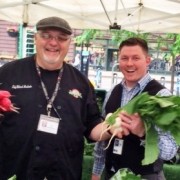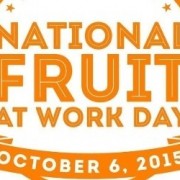New Appetites, New Routines: Todays Food Culture
This is a very exciting time for the food and beverage industry; there is such a vibrancy overflowing for all things cooking, shopping and eating. Consumers have a newfound curiosity, a deeper interest and higher levels of engagement with food that we are truly witnessing a broader cultural shift. You might say we are living in a food culture renaissance.
Fundamental shifts in technology, travel and trade have placed food back at the center of everyday life and popular culture. Food is fun and important. Interest in food isn’t a mere millennial trait but a reflection of evolving food culture.
The Hartman Group’s Culture of Food 2015: New Appetites, New Routines new report is a deep dive into the world of food today. We uncovered how consumers are trading out traditional food routines for new ones that reflect the desires and challenges of expanded variety in a complex food landscape. Here are five notable findings from our research.
1. Consumers orient differently to the world of food based on the intensity of their engagement with broader food culture.
We have identified three consumer segments that cover the spectrum of intensity from low (periphery) to high (core) based on involvement in food culture. We find a consistent gradient from periphery to core in terms of attitudes, preferences, orientations and behaviors. Primary dimensions used in this segmentation include price sensitivity, aspirational approaches to food and underlying indicators of food passion.
2. New routines necessitate new ways of cooking.
Cooking is becoming a skill consumers aspire to develop, not just a domestic (previously gendered) chore. Cooking is seen as a basic life skill, cultural capital, geek exploration and life passion. This is not to say consumers want to cook all the time but that they want to have the choice to cook or to outsource to food companies, food retailers and foodservice.
3. New food routines reflect desire for expanded variety.
The everyday “foods I grew up with” used to be foods for life. No more. Now they are often relegated to comfort foods or special occasions as consumers add new foods, dishes, flavors and ingredients to their everyday consideration set. Innovative food service, specialty retailers and new brands inspire consumers to participate in new food experiences that are often higher quality.
4. New food routines accommodate disruptions and contingencies.
Consumers eat around their schedules rather than scheduling around mealtimes. Dinner becomes a mere pause between other activities. Lunch is often scheduled out to accommodate an overflow of meetings and must-do’s. And breakfast can be multi-tasked between commuting and working. This is our modern time deficient. The ad hoc approach to mealtimes is increasingly part of the new routine.
5. The meaning of “fresh” is evolving from less processed towards transparency.
Transparency is a small but growing driver of evolving ideas about fresh. Fresh, less processed continues to be the dominant consumer frame for understanding and procuring higher quality in food. But those who are most engaged and influential in the world of food now associate higher quality with knowing where food comes from and who made it. In the future, transparency is poised to align with a deeper understanding of “fresh” beyond less processed (what’s in it).
Further information on the report: Culture of Food 2015











